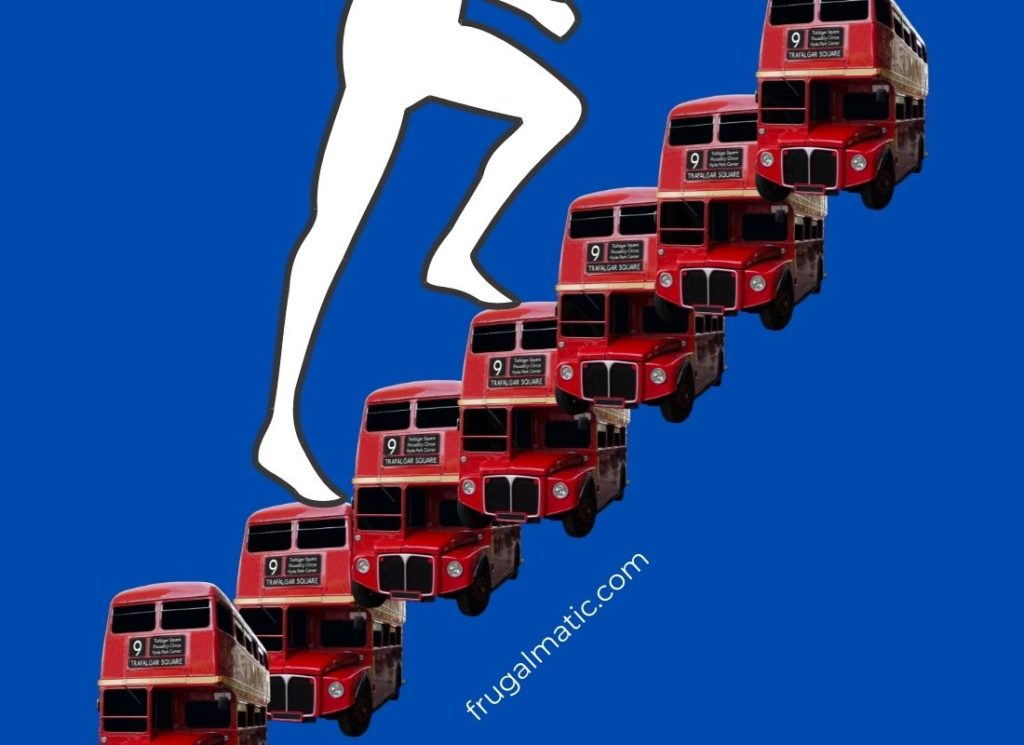This post was last updated on August 11th, 2022 at 11:20 am
Many people realize they should be more physically active but struggle to find the motivation to move more. They come home from work, often feeling tired, and simply have no interest in “working out.” But what if you could be physically active while at your job? That might make reaching your fitness goals easier, right? The possibility raises a good question: What is the best job for being physically active, besides for obvious professions like an athlete or personal trainer? I’m going to explore some possible answers, but I must warn you: It’s complicated.
The man who’s sometimes credited with “inventing” exercise stumbled onto its importance while conducting a study comparing the health outcomes for two types of workers: London bus drivers and bus conductors. Dr. Jeremy Morris discovered that bus drivers had a higher rate of heart attacks than conductors. Morris attributed the discrepancy to the different job duties of the two positions: Drivers sat most of the day. Conductors walked up and down the double-decker buses’ stairs to collect fares, assist with luggage, and other duties.
Nobody today would be surprised by Morris’ findings, especially not regular readers of this site. But his findings were a revelation in 1949 at the time of the study. Morris later found similar results when examining heart-attack rates of postal carriers with walking or biking routes versus civil servants with desk-bound jobs. His work launched many more studies examining the benefits of exercise, leading to today’s push to encourage people to move more.
When being physically active makes you money
Despite Morris’ studies, many people today neglect to consider the potential benefits of being able to exercise while on the job. Unfortunately, workplaces are more sedentary than ever, as automation has eliminated movement from many previously physical tasks. Furthermore, the pandemic has worsened this trend, leading to a greater dependence on exercise that accomplishes nothing beyond the exercise itself. Examples include pedaling to nowhere on a stationary bike or running to nowhere on a treadmill.
The beauty in what Morris discovered about the job duties of conductors (they climbed 500 to 750 steps a day) is the obligatory nature of their exercise. Since carrying out conductor duties required climbing stairs, they had no choice but to be physically active. Conductors didn’t have to motivate themselves to get moving; the decision was made for them when they picked the job.
However, few jobs nowadays involve working on double-decker buses, at least not in the U.S. And, as you’ll learn later in this post, not all types of physical labor yield the sort of health benefits that Morris linked to conductor and postal carrier jobs. At least one researcher has found that certain physical labor can harm the body.

To complicate matters: the ‘physical activity paradox’
Dr. Andreas Holtermann has been studying a phenomenon he calls the “physical activity paradox.” His findings counter claims that physical activity is “one of the best investments you can do for your health.” “I think it’s a paradox in that it might not necessarily be good for all of us to do physical activity if it’s work related, and it’s part of doing productive work for several hours,” Holtermann said during an interview for the Physical Activity Researcher Podcast.
Holtermann, who’s the head of research at the National Centre for Working Environment in Denmark, says blue-collar occupations, such as housekeeping, construction work, and butchering, can contribute to chronic conditions. One problem with these jobs is they’re often performed over several hours without allowing adequate time to rest. Also, these jobs elevate blood pressure but not high enough for employees to experience the kind of cardiovascular benefits that come from regular exercise. Meanwhile, employee blood pressure often remains elevated and fails to drop to normal levels after the employees finish their work. They can develop hypertension, according to Holtermann, similar to how prolonged mental stress can trigger hypertension among white-collar workers. From this perspective, occupational physical activity appears hazardous.
Must productivity come at the expense of fitness?
Occupational physical activity becomes problematic, in particular, when the employer’s productivity demands conflict with employees’ physical needs. If personal trainers ran worksites, they might intervene to help employees vary their movements and take breaks when their bodies needed rest. A personal trainer would want a nice balance of rest and workload. But the reality is, what’s good for employee health isn’t necessarily good for productivity, at least with today’s workplace culture. Unlike when working out at a gym, employees can’t customize their tasks to maximize the health benefits, as a personal trainer would do for their clients.
And unlike people who exercise for fun, many employees don’t have the luxury to skip a “workout” and call in sick when they’re feeling unwell. They often work regardless of the potential negative effects because of productivity demands. For example, workers who lift boxes for three hours straight must continue lifting boxes until the end of their shift. “You’re not necessarily able to listen to your body and say, ‘I’ll take the rest of the day off.’ That’s just a crucial difference” between occupational and leisure physical activity, Holtermann said.
In search of the happy movement medium
Holtermann’s studies seem to contradict Morris’ findings. So who is right?
They’re probably both right in their own way. One can imagine that the conductors and postal carriers in Morris’ studies were physically active in such a manner that enhanced instead of harmed their health. Perhaps productivity demands placed on conductors and mail carriers elevated their heart rates to healthy levels and also allowed for adequate recovery times. Regardless, their workplace conditions led to healthier outcomes than their sedentary co-workers. Any number of factors could explain Morris’ results, including ones Morris himself didn’t consider.
Read: How to form the physically active mindset
Despite Holtermann’s findings, I believe the productivity demands of some jobs mimic regular exercise and yield health benefits, if only by sheer coincidence. For example, maybe folding bed sheets and cleaning all day (a hotel housekeeper) isn’t good for the heart but delivering packages by bike (a courier) happens to be. I don’t know for sure, but we should remain open to the possibility that certain occupational physical activity is actually good for you. More research is needed to identify these “unicorn” jobs, which permit workers to earn a living while boosting physical health.
The original physically active job: hunter-gatherer
After all, if all occupational physical activity were unhealthy, we’d expect mankind’s first form of occupational physical activity—hunting and gathering—to be hazardous. But studies of the few hunter-gatherers living on Earth today reveal they suffer from few of the ailments found in industrial societies. Dr. Daniel Lieberman, a Harvard University professor of human evolutionary biology, notes that hunter-gatherers spend large parts of their days being physically active, and they also spend plenty of time sitting and recovering from their physical activity.
“Altogether, twenty-first century Americans elevate their heart rates to moderate levels between half and one-tenth as much as nonindustrial people,” Lieberman states in his book, “Exercised: Why something we never evolved to do is rewarding and healthy.” Yet, hunter-gatherers don’t appear to suffer from hypertension or other afflictions cited in Holtermann’s studies. That’s probably because hunter-gatherers aren’t working for an employer seeking to maximize productivity. Rather, they supervise themselves as part of a community interested in finding enough food to eat a meal.
Read: Sitting is the new smoking, despite what ‘Exercised’ says
Potential health benefits of home-based jobs
Perhaps we should recast the question, “What is the best job for being physically active?” A better question might be, “Which jobs encourage the healthiest forms of physical activity?”
My answer would be: Any job that offers the flexibility to be physically active in a way that you enjoy. When workers engage in physical activity on their own terms, I suspect their health outcomes improve.
The best job for being physically active is probably one placing the fewest restrictions on workers’ movements. In this case, the ideal job for moving more is a home-based job, probably white collar but not necessarily. When you’re working from home, you gain some freedom from your employer. For instance, you can do jumping jacks at your desk or run up and down the basement stairs 10 times without your co-workers looking at you like you’re crazy. In a home setting, your boss still tracks your productivity but can’t as easily track your movements and pass judgement on them.
To move more, employer flexibility is key
Many office jobs are unhealthy for the opposite reasons that some physically-demanding jobs are unhealthy. Rather than forcing workers to be overly active, these office jobs force workers to be too sedentary. Employer expectations and office cultures conspire against physical activity and make it difficult for office workers to be physically active without feeling like a rebel or that they’re wasting company time.
When you’re working from home, however, you can overcome some constraints, namely office culture. Productivity remains important in a home-based job, but there’s flexibility in how that productivity happens. You no longer must sit in a company cafeteria and eat your lunch. You can have lunch in your backyard, for instance, and then work in your garden for several minutes before finishing that spreadsheet, or whatever the task. With a home-based job, the opportunities for physical activity expand, depending on how aggressively employers monitor their home-based workers.

But flexibility won’t matter if you just sit there
Of course, some people who work from home do not take advantage of this setup. They end up being more sedentary at home than they would be at the office. For some people, the best route to better fitness might be a physically active job—but only if that job can be structured to avoid those health dangers documented by Holtermann.
Because everyone responds differently to their environment, it’s difficult to say which job is the “best” for being physically active. (Sorry if my non-committal answer disappoints.)
Ultimately, I think it’s possible to be physically active at most jobs. Whether that activity proves beneficial is the big question. If you can make your job into an awesome workout, you’ll be maximizing your time in a way that most people don’t. That’s being frugalmatic! Few people are able to earn a living while simultaneously benefiting their physical fitness. Your employer’s willingness to be flexible is important. Just as important is your own willingness to identify and take advantage of opportunities to lead a physically active lifestyle.

